How to grow the contents of your salad bowl indoors – for fresh crops all year round
If you like the idea of growing your own salad crops indoors, check out these easy hydroponic gardening ideas
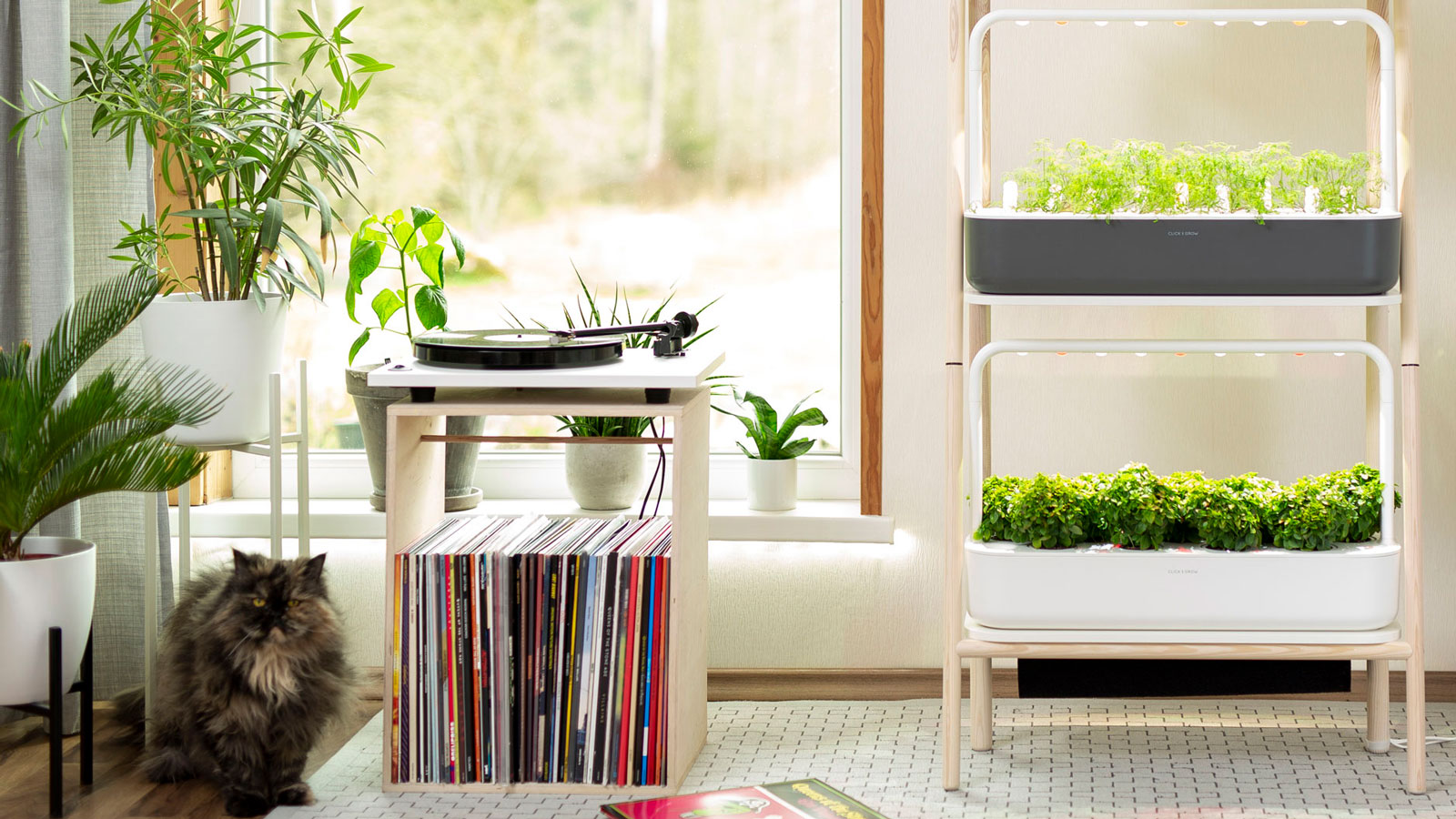

Setting up an indoor garden has the potential to give you year-round fresh, homegrown produce.
Hydroponic growing - meaning growing plants without soil, and usually in water - is a big trend for apartment living and other growing situations without access to conventional gardening methods. But it's also good if you simply want to grow your own fresh produce all year round, and it's particularly well-suited to salad crops.
The latest hydroponic smart units sit on kitchen countertops, and are easy to set up and maintain. Alternatively you can make your own hydroponic growing system, which can be as simple as a row of Mason jars sitting on a kitchen windowsill.
In theory, any plant can be grown hydroponically but in practice it tends to be most widely used for crops often grown in greenhouses, such as the salad bowl staples of lettuces, tomatoes, cucumbers and sweet peppers, as well as herbs and other leafy greens like spinach. We've asked the experts for advice on how best to grow these delicious vegetables, so you can try your hand at hydroponics, too.
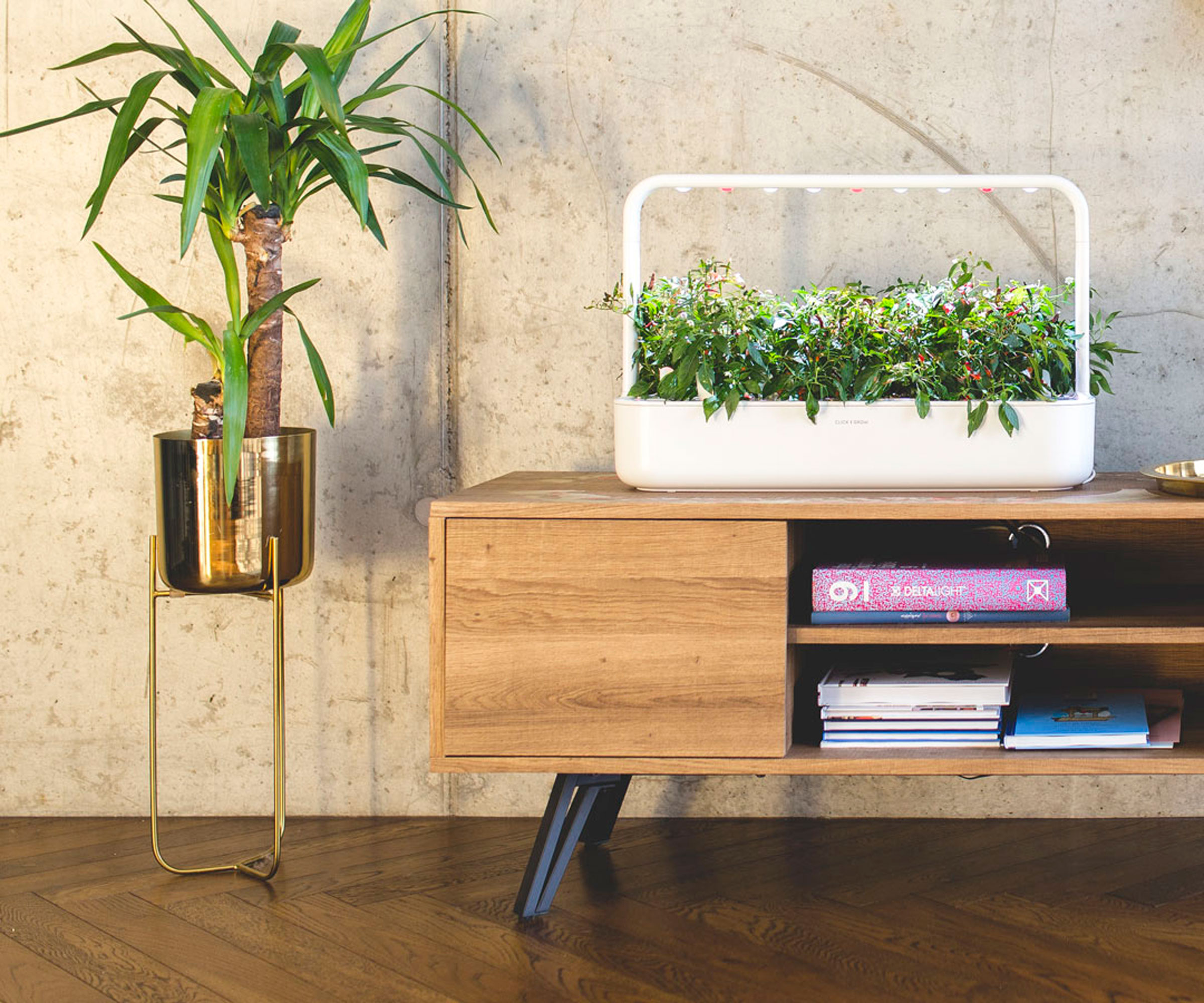
Hydroponic units can be neatly slotted in if space is tight
How to grow salad crops indoors
Hydroponic gardening is a brilliant way of growing plants indoors using a water-based nutrient solution instead of soil. Most hydroponic systems include a container for the plants (usually a tray or cups), a soil-less growing medium (such as perlite, coco coir, or peat moss), a flow system for the nutrient solution, and a plant light (usually LED).
It can be as simple as finding out how to grow plants in water using a set of Mason jars. Or at the other extreme you can also get smart countertop systems and grow towers that are perfect for salad bowl crops and look good too.
'A home hydroponic garden should look great, smell great, grow plants and be a unique expression of you and your life,' says hydroponic expert Tyler Barras. 'You can use tabletops and kitchen counters as a location for an indoor garden. Although this takes up counter space it is capable of yielding several salads per week.'
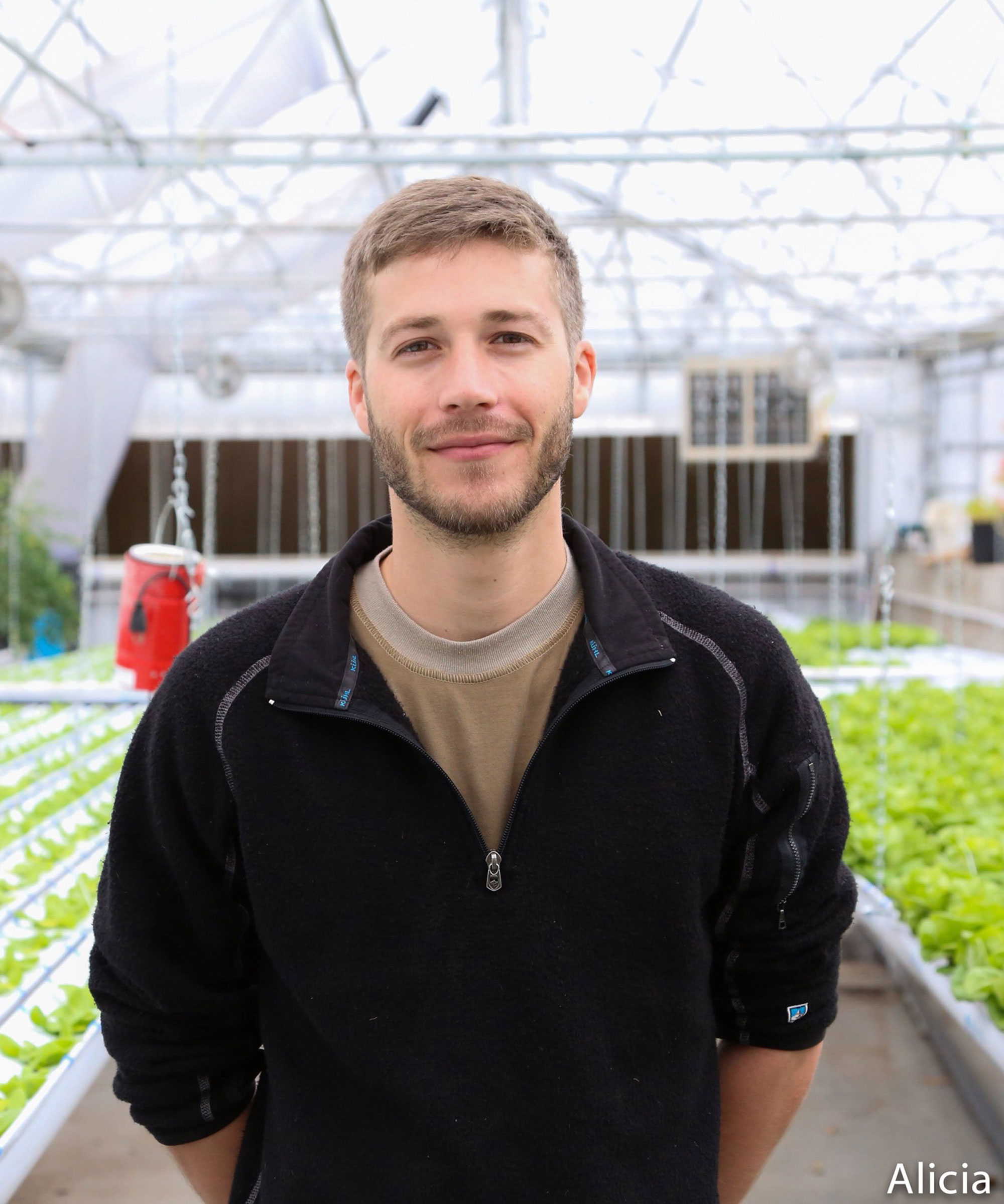
Tyler has a range of urban agricultural experience, from homesteading to commercial hydroponics, and a BS in Horticultural Sciences from the University of Florida. After graduation, he worked as a grower for 3 Boys Farm Inc., the first certified organic recirculating hydroponic farm in the US. Currently, Tyler works as an agricultural consultant specializing in urban agriculture, hydroponics, vertical farming and greenhouse production.
What you need for salad crops to thrive indoors
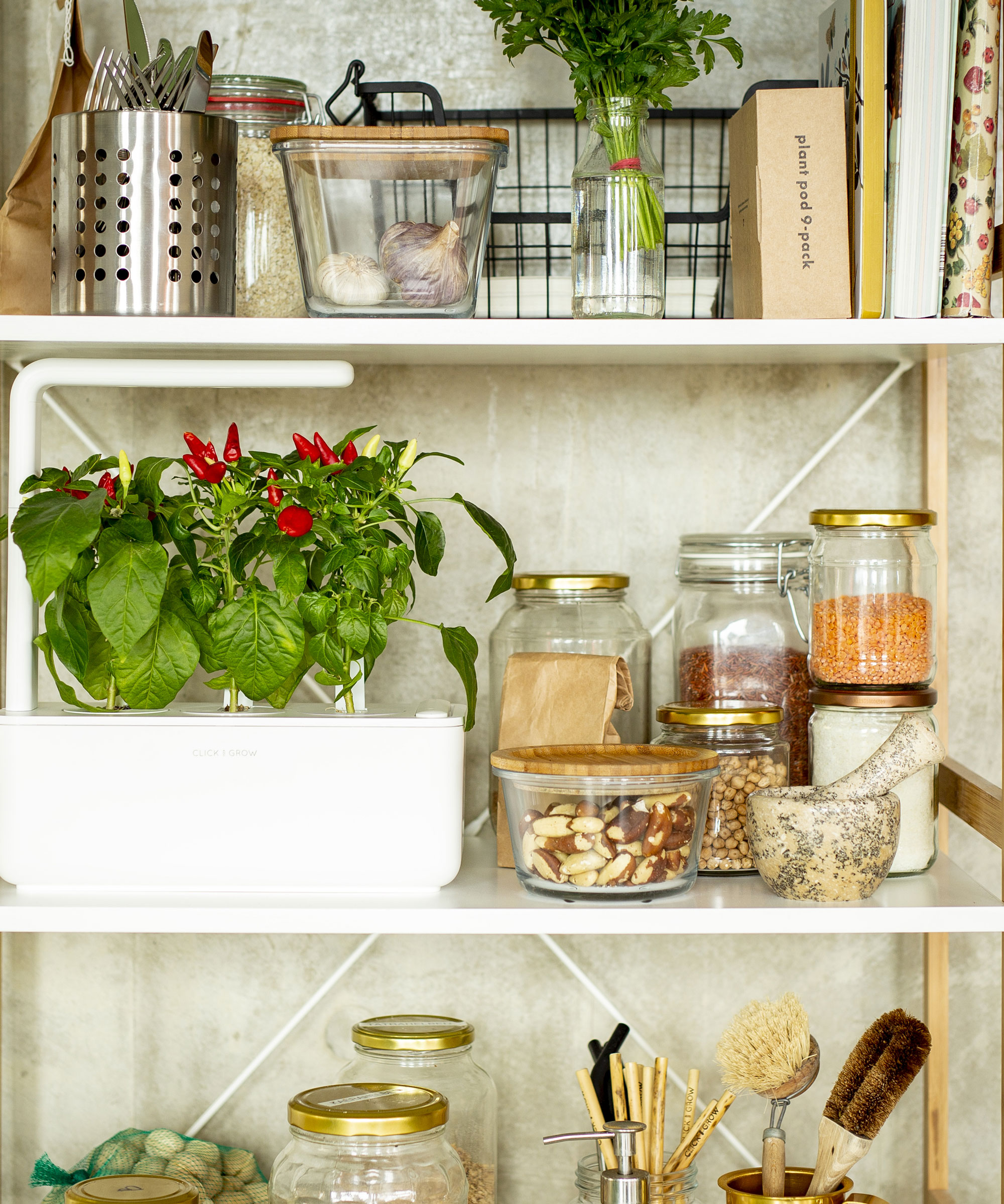
To help your plants grow well, your hydroponic salad bowl will need proper lighting, as well as the right temperature and humidity levels. A consistent temperature of around 65-75°F suits most plants.
It's also important to choose a growing area with enough light and ventilation, as well as access to a water source. When using a hydroponic system, the water and nutrient supply will support the growth of your plants, and you will need to adjust the nutrient solution strength and composition based on the growth stage and plant requirements.
Different plants have different light needs. Grow lights have specialized spectrums of LED lights that support plant growth. Having strong enough lights will ensure that you are able to grow all types of plants.
Choose LED grow lights like these ones from Amazon, which are a great choice for beginners because they are energy-efficient and adjustable.
Make sure you regularly inspect your plants for signs of nutrient deficiencies, pests and diseases too.
6 easy crops to fill your salad bowl
'Start with lettuce and other leafy salad greens or microgreens, as these crops are the easiest for beginners to grow hydroponically,' says gardening expert Mary Jane Duford. 'Once you’re comfortable with greens, move on to fruiting crops like tomatoes and, eventually, cucumbers and peppers.
'Consider buying a small hydroponic smart system like an AeroGarden growing system from Walmart or a Click & Grow system available on Amazon,' adds Mary Jane. 'It's the simplest way for most people to get started growing salad crops.'
Now find out how to fill your salad bowl with the basics, and you'll be skipping the salad aisle at the grocery store from now on.
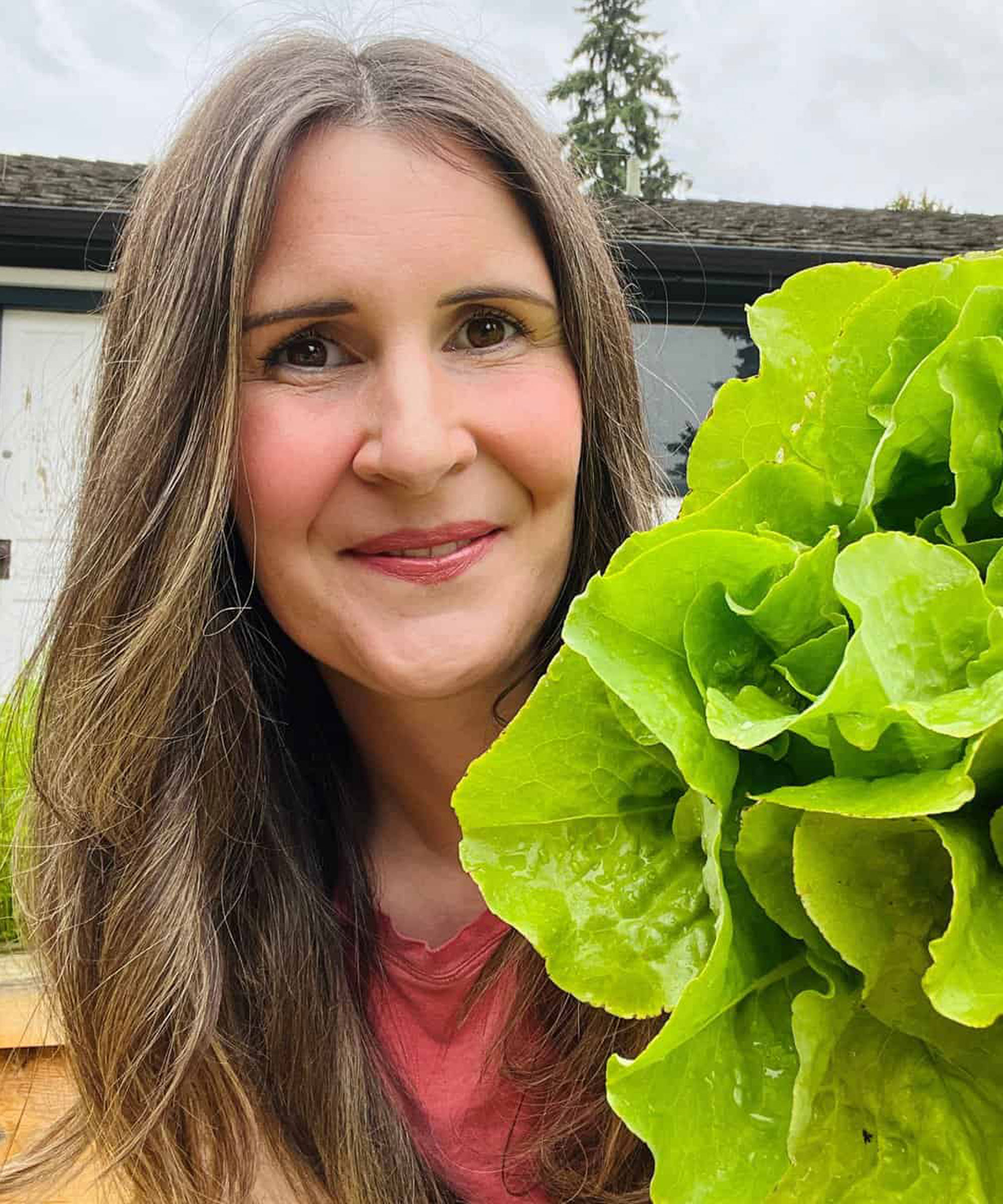
Mary Jane Duford is a certified master gardener and founder of Home for the Harvest. A qualified engineer, her expertise often intertwines with gardening methodologies. In addition to hydroponics, Mary Jane has extensive knowledge of sustainable gardening practices, soil science, and selecting cultivars well-suited to home gardeners.
1. Lettuce
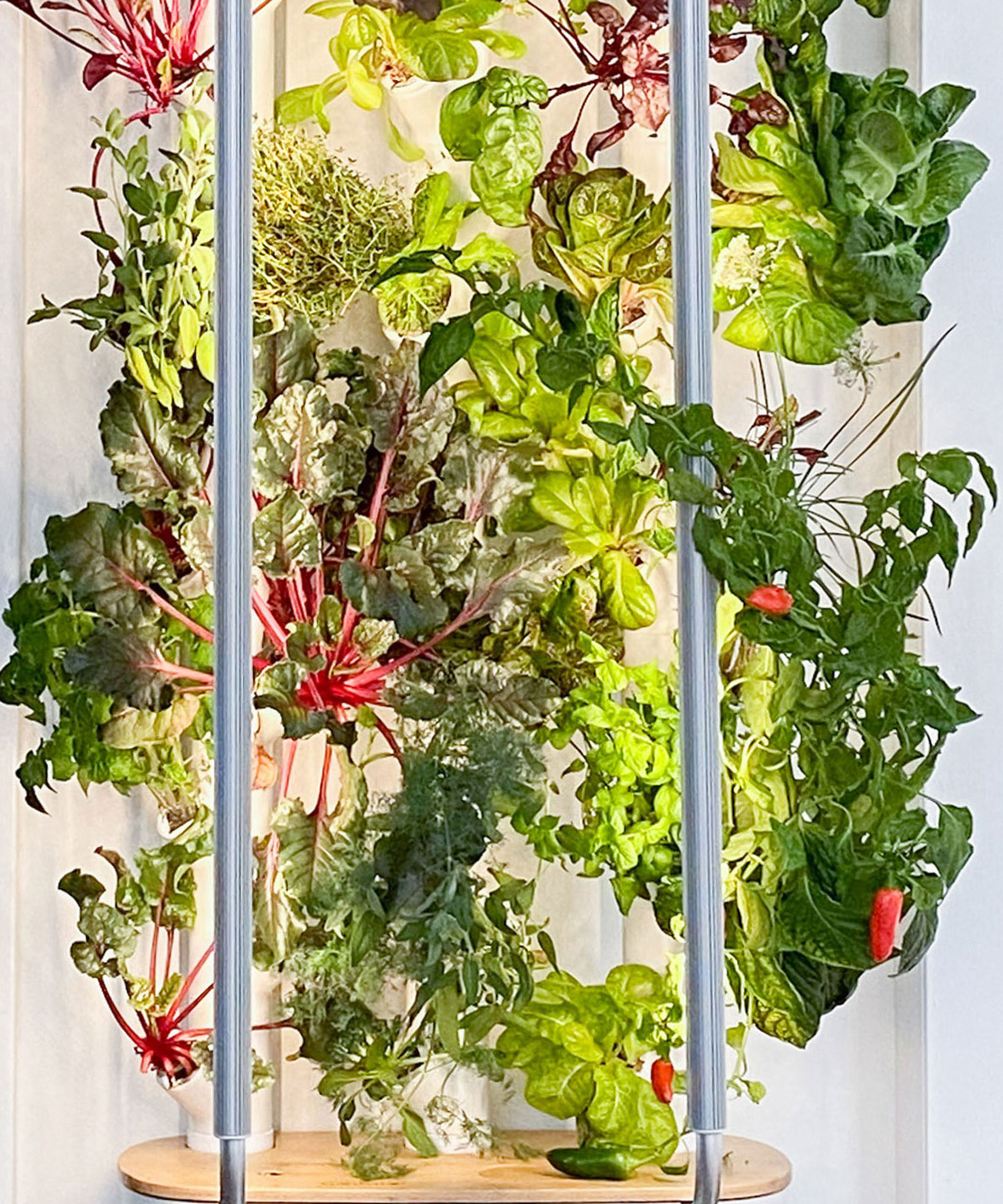
Grow lettuce and other leafy greens in The Gardyn Home Kit 3.0, which can grow 30 plants year-round in two square feet
There's a reason why lettuce is one of the most popular hydroponic crops. It's easy to grow, and will give you fresh, crisp leaves all year round.
'Most varieties of lettuce do well hydroponically,' says Mary Jane Duford. 'For a quick crop, choose smaller varieties like ‘Tom Thumb’ and ‘Little Gem.’ Full-sized butterhead lettuces are a wonderful gourmet option if you have the space. In dry climates, be sure to keep the humidity up to between 40-60%.'
Most varieties of lettuce grow well close together and don’t need big hydroponic rigs. Lettuce thrives in several different hydroponic systems, and can produce fresh, ready-to-eat produce in as little as three weeks.
The 'Little Gem' variety of romaine lettuce reaches a height of around 6 inches, as well as the butterhead 'Bibb' lettuce, which it has a good margin of error for beginner hydro gardeners.
2. Cherry tomatoes
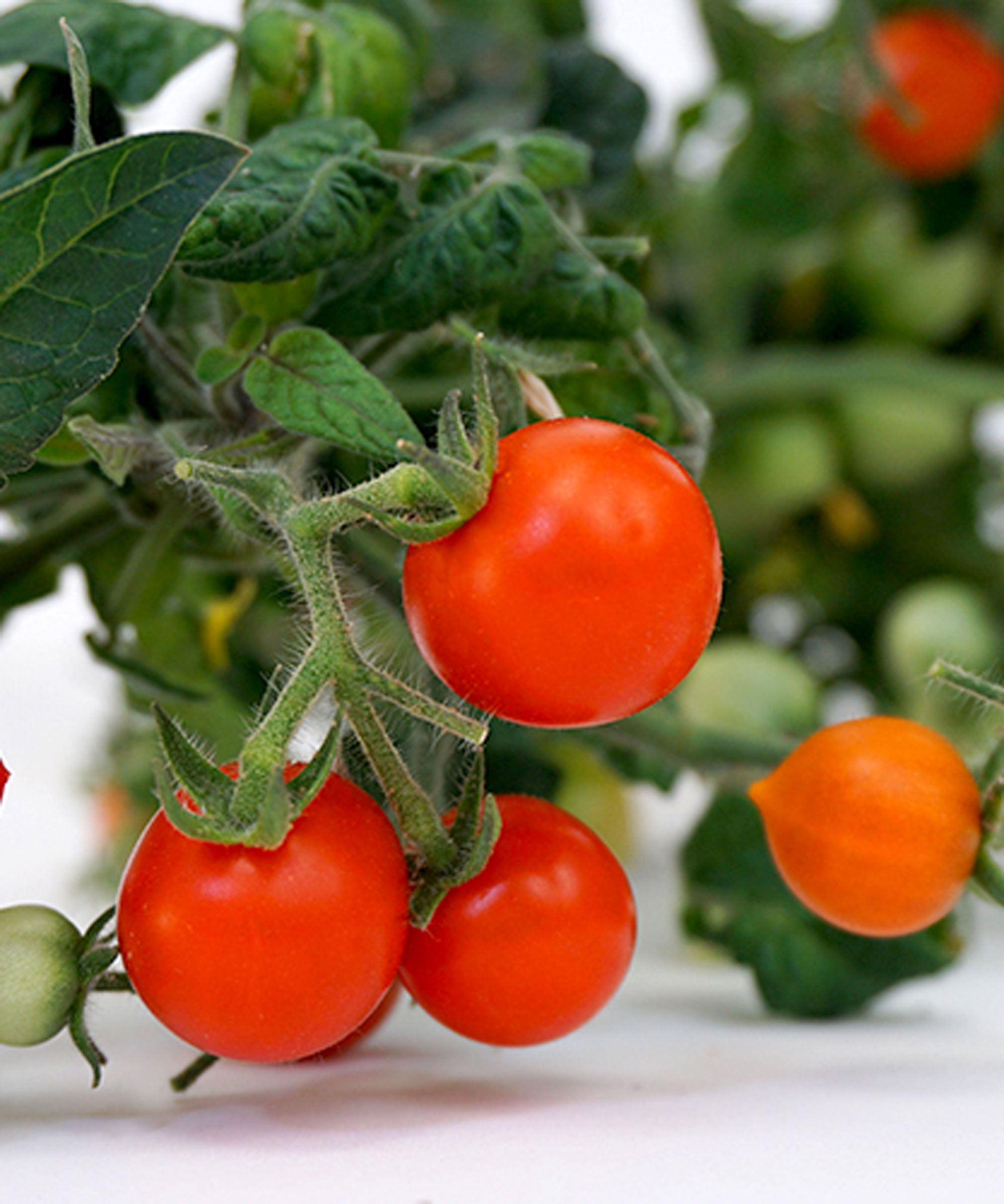
Choose cherry tomato varieties for the best results
Tomatoes grow really well in all kinds of hydroponic systems, so whichever one you choose is down to personal preference.
You can opt for a grow tower for tomatoes due to the height of the plants. Or look for dwarf tomato plants, often called ‘patio’ or ‘baby’ varieties, or cherry ones, which can be grown with great success indoors in smaller units. 'I’ve had success with both ‘Orange Hat’ and ‘Tiny Tim’ cherry tomatoes grown indoors,' says Mary Jane Duford.
Hand-pollinate flowers by gently shaking the entire plant, or gently sweep the inside of blossoms with a small brush.
You can also expect a higher yield compared to traditional methods of growing tomatoes, as long as your plants get enough light and water, as well as an adequate supply of nutrients. Look out for a fertilizer that is high in nitrogen (N), phosphorus (P), and potassium (K). Tomatoes also need other nutrients, such as magnesium, so for ease see if your local garden center sells a product that covers them all.
3. Cucumbers

Harvest cucumbers when they reach 3-6 inches long, look dark green, and after the yellow flower falls off their tip
Although vine plants are not the easiest to grow, the payoff is big if you're looking for a supply of fresh crispy cukes. You can grow just about any kind of cucumber hydroponically but it's best to choose a variety like Spacemaster, available here from Burpee, which is compact so ideal for hydroponic growing. Its short vines produce slender, dark green fruits that are around 7 inches long.
Cucumbers need a lot of warmth and light to grow, at least 12-14 hours every day, followed by 10-12 hours of darkness, so you might need to invest in some grow lights. This day/light cycle simulates the conditions a plant would thrive in if it were outdoors. Hydroponically grown cucumbers also do best when grown slightly above room temperature.
You will need to naturally pollinate your cucumbers too, by sweeping a small brush daily around the inside of the male flowers, then brushing the inside of the female flowers (which have a small cucumber at the base, while male flowers do not).
Cucumbers are heavy feeders too. Use a hydroponic nutrient solution high in nitrogen when you first propagate your plants, but as they get older, you’ll want to increase the frequency and strength, and use more potassium and phosphorus.
4. Sweet peppers
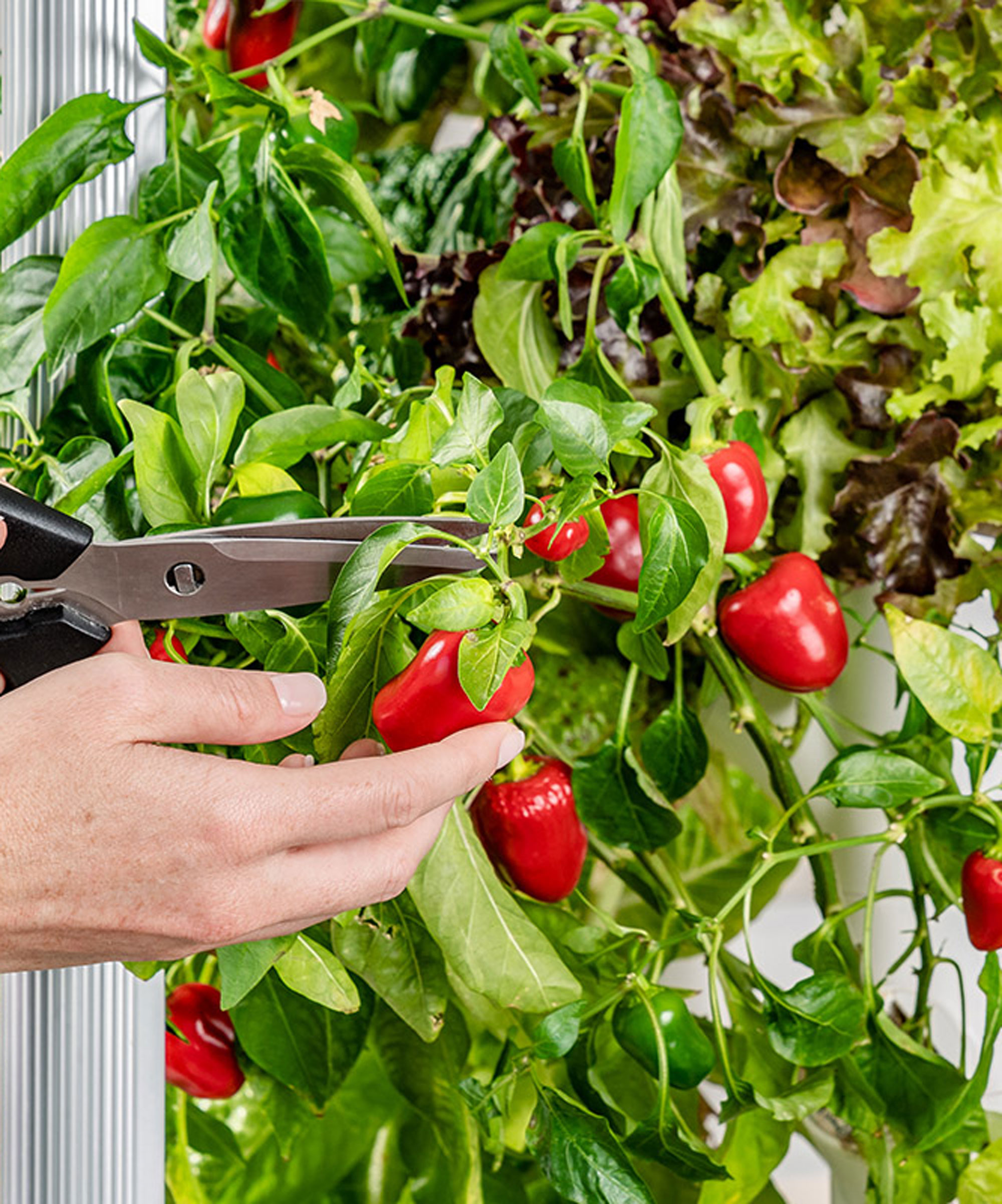
As long as sweet peppers stay on the plant, they’ll continue to ripen, change color, and turn sweeter
Many types of peppers, including bell peppers, chili peppers, and sweet peppers, thrive in hydroponic systems. Sweet pepper varieties, such as 'Sweet Banana', available here from Burpee, or 'Cubanelle' peppers, which are known for their mild and slightly sweet flavor, are a great choice for adding to the salad bowl.
Miniature or dwarf pepper varieties are well-suited for hydroponic systems with limited space, such as Mini Sweet peppers like 'Jungle Parrot', available here from Burpee.
If you are growing pepper varieties that produce fruit, you may need to assist with hand pollination. Gently shake the plants or use a small brush to transfer pollen between flowers.
Maintain a consistent light schedule of 14-16 hours of light per day to support plant growth during the vegetative stage, then drop to 10-14 hours of light per day once flowers begin to appear on your plant. Follow the recommended nutrient package for the best results.
5. Arugula
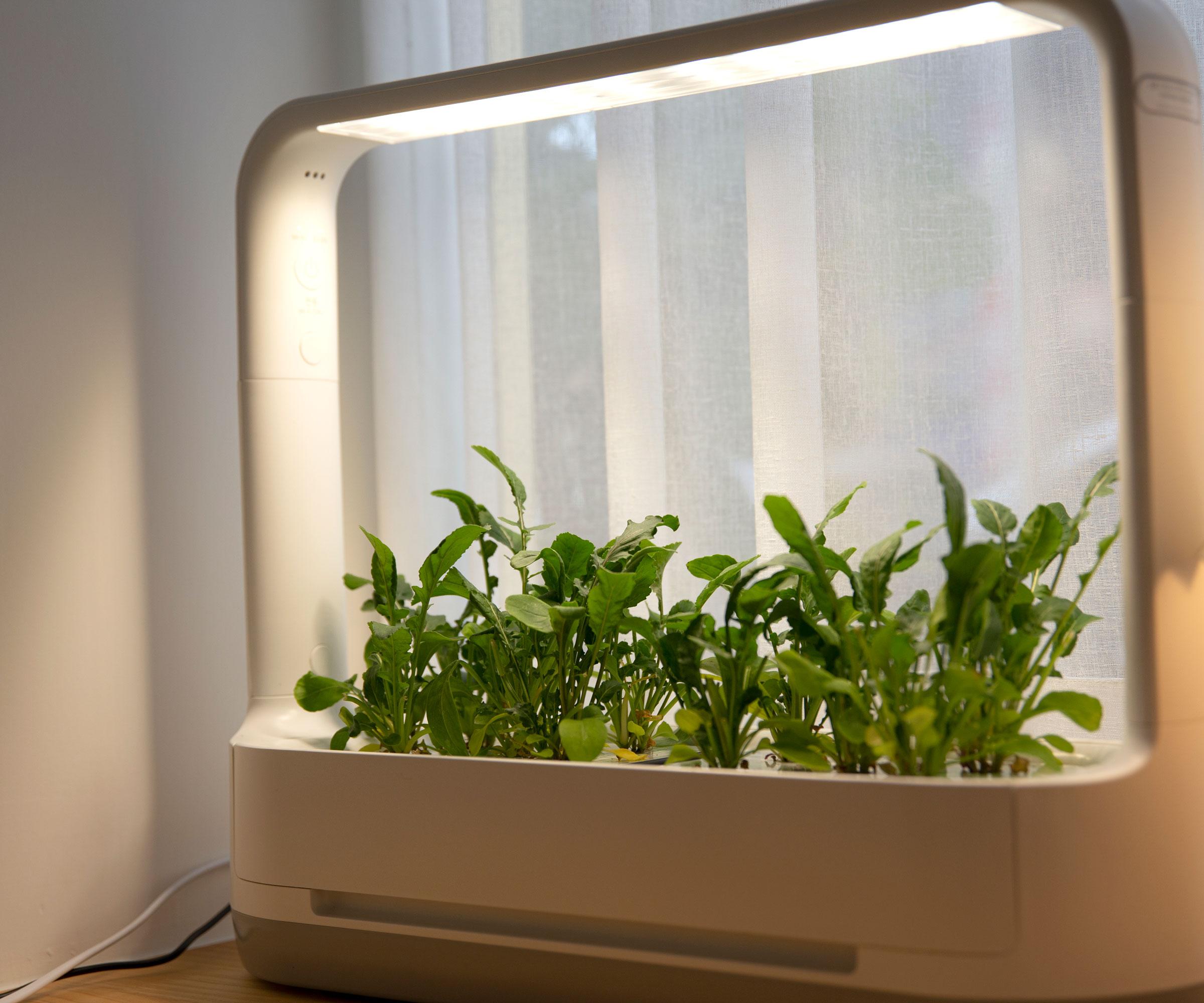
For an ongoing harvest snip the outer leaves of your arugula just above the base of the plant once they reach 2-3 inches tall to let the inner leaves continue to grow
Another leafy green that many hydroponic growers choose is arugula so if you're experimenting how to fill your salad bowl be sure to include this in the mix. It adds a delicious peppery punch to salad combos. Easy for new growers to master, it can be harvested again and again from the same plant as it's a repeat cropper.
When growing arugula, you can expect germination after about seven days, and a first harvest after about four weeks, when you can start pinching off baby leaves around the outside of the plant, leaving the ones in the center to continue growing. If you’re lucky you can get a second harvest 1-2 weeks later.
Another plus when growing arugula hydroponically is that you can plant it densely in a small unit. Arugula can be grown using the so-called Kratky method. All you need is a clear plastic container with a lid. Simply fill it with a nutrient solution specially formulated for leafy greens. Then place a small piece of growing medium, like a piece of rockwool, at the bottom of the container, and sow the arugula seeds on top of the growing medium. Cover the container with a lid to create a sealed environment that will help to maintain humidity, and place in a bright, sunny location and wait for the plants to grow.
Another simple way to grow arugula is in a glass jar. You can create a mini hydroponic system by placing 1-2 inches of cold tap water into a jar, and placing it on your window sill.
6. Herbs
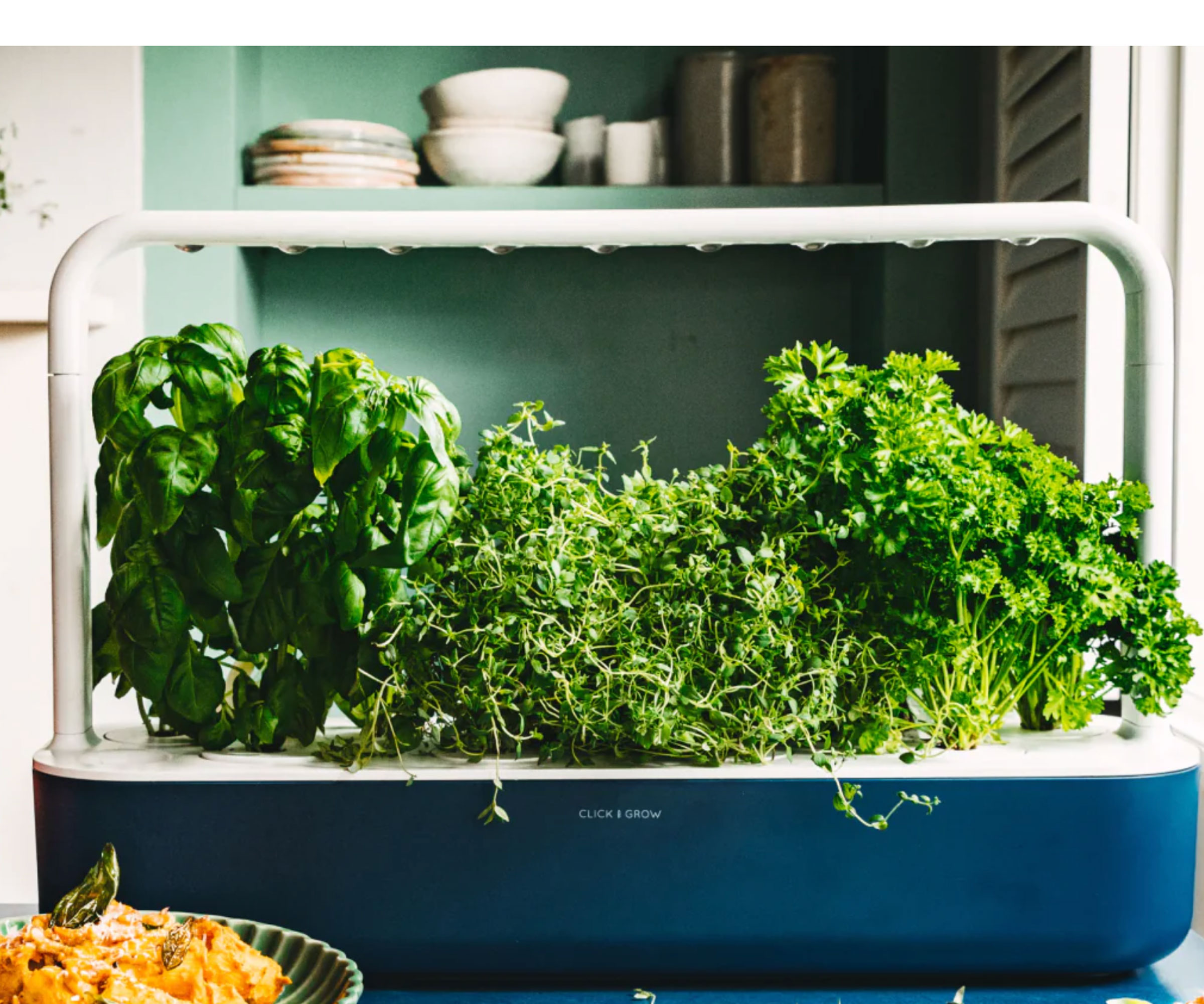
The Smart Garden 9 Limited Edition by Click and Grow is perfect for growing herbs indoors
'Many green leafy herbs are perfect for home hydroponic systems,' says Mary Jane Duford. 'These include basil, parsley, cilantro, and mint. A small countertop hydroponic system can easily keep you supplied with enough fresh herbs for a single household.'
Once you've established a selection of basil, mint and cilantro plants take things up a level. Woody herbs like rosemary, thyme, and oregano may take some time to sprout, but once established will produce plenty of stems and leaves to continually harvest from.
Choose an easy set-up on your countertop for growing herbs indoors and soon you'll be snipping your own herbs 365 days a year.

Complete with an LED light, you can grow up to 12 varieties of vegetables, fruit or herbs in this countertop growing system.
FAQs
How easy is it to grow salad crops hydroponically?
'A common misconception about hydroponics is that it's more difficult than traditional gardening,' says hydronic expert Tyler Baras. 'While some designs are difficult to manage others simply involve filling up the reservoir with water, mixing in some fertilizer, adding some seeds, and then returning two to four weeks later to harvest. Hydroponic gardens like this can be far easier than any traditional soil-based garden.'
You can maximize your crops too, as monitoring and controlling factors like nutrients, humidity, temperature, and moisture levels within an optimum range is far easier in a hydroponic garden.
If you're inspired by these ideas on how to fill your salad bowl by growing crops hydroponically, try cultivating other salad staples like leafy greens spinach and mizuna in the same way, as well as edible flowers like nasturtium.
Sign up to the Homes & Gardens newsletter
Design expertise in your inbox – from inspiring decorating ideas and beautiful celebrity homes to practical gardening advice and shopping round-ups.
Lifestyle journalist Sarah Wilson writes about flowers, plants, garden design and gardening trends for Homes & Gardens. She has studied introductory garden and landscape design and floristry, and also has an RHS Level 2 qualification in the Principles of Plant Growth and Development. She is a regular contributor to Homes & Gardens and Livingetc. She has also written for Real Homes, Modern Gardens and Country Homes & Interiors magazines.
-
 How to grow sassafras – for a low-maintenance native tree that can even be planted in shady yards
How to grow sassafras – for a low-maintenance native tree that can even be planted in shady yardsFor an easy-to-grow North American tree, you will not find much better than sassafras
By Thomas Rutter
-
 'Big results before you know it' – Experts urge you to use the ‘Take Away 10’ method for simple decluttering with zero decision fatigue
'Big results before you know it' – Experts urge you to use the ‘Take Away 10’ method for simple decluttering with zero decision fatigueIt can cut hundreds of items from your home in just a few weeks
By Ottilie Blackhall